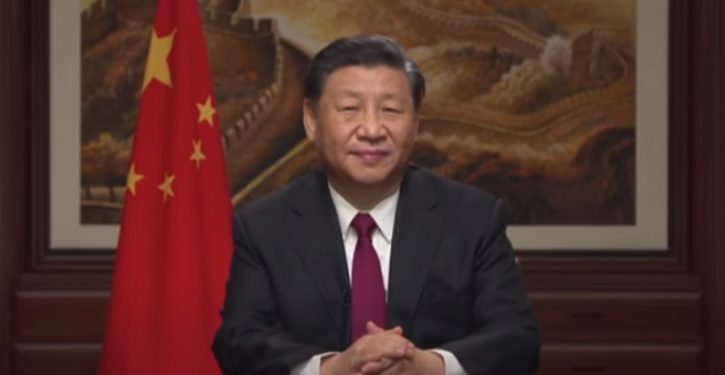
On 5 May, Reuters reported that, according to Australian lawmakers, “China has drawn up plans to upgrade an airstrip and bridge on one of Kiribati’s remote islands about 3,000km southwest of Hawaii.”
Reportedly, some lawmakers in Kiribati (pronounced “Kiribas”) view this with concern. It doesn’t appear that enthusiasm for such a project is universal in the island republic, which is home to about 120,000 people.
But the prospect is obviously of significant strategic concern to Australia, Japan, and the United States, among others. As the overview map indicates, an improved airfield in Kiribati would give China a forward location for potential military operations, starting at the least with long-range surveillance much further into the Western Pacific than Chinese aircraft can currently contemplate.

Other considerations, while somewhat obvious, demand mention. Chief among them is the point that the islands of Kiribati are of the same type China has specialized in building out artificially in the South China Sea, and more recently in projects in Sri Lanka and the Maldives in the Indian Ocean.
The Kanton Atoll, where the airfield improvement is being eyed, is a good example. It strongly resembles Mischief Reef in the Spratlys.

It would hardly be a challenge for the Chinese to develop Kanton in the same way as Mischief Reef.

China has also incorporated underwater construction projects, facilitated by intensive dredging and the addition of underwater infrastructure, in militarizing and artificially fortifying the South China Sea islands. (Beijing’s naval base in Djibouti, on the Red Sea, is also reported to have a significant underground component. The nature of the access to it has not been described.)
Creating a network of sensors across an archipelagic region is one objective of such preparations. The situation of Kiribati is strategically different from that of the South China Sea; as a forward basing area, China would want good security for it, but Kiribati doesn’t lie across one of the world’s most-trafficked seaways, as the SCS islands do.
However, China has reason to want area dominance beyond the mere prospect of forward presence. There is a profile of U.S. presence in the Pacific Islands region, and in recent years, the main factor in the management of it has been environmental rather than military.
China moving into the region would, in the true sense, “militarize” the situation of the islands, in a way similar to Iran’s recent push for a land-bridge to the Mediterranean. The latter has militarized terrain – militarized it for the foreseeable future – that in previous decades only episodically surged to dominate the geography with features of military concern and planning, from northern Iraq and eastern Turkey down through Syria, Jordan, and Saudi Arabia. China’s beachhead in Kiribati would have a similar effect in the Pacific Islands.
One thing China could do, and most certainly envisions doing, is construct support for submarine and surface ship deployments in the islands of Kiribati. (Beijing would, of course, deny any such intention. Pro forma exchanges on this matter are pointless; the only prudent course is to assume this is part of the vision. No commercial purpose, or mere presence of an airfield, is worth the political alarms and cost of this move, which flanks all of Japan, Australia, and the U.S. in Guam.)
In the area of Kiribati, the U.S. is constrained by the exigencies of environmental management, and particularly so because of the designation of the Pacific Remote Islands Marine National Monument in 2009.

Howland and Baker Islands, with their surrounding protected areas, are just to the northwest of the central Kiribati Islands group, where Kanton is found. More of Kiribati lies to the west of Howland and Baker.


Additional protected areas lie further north and east; Chinese attack subs would be most likely to operate north of Kiribati. But seamount chains east of Kiribati would be enticing for ballistic missile submarine patrols.
The U.S. Navy must seek regulatory dispensation to use low frequency active sonar in the monument-protected area, a dispensation most recently awarded in 2019 and running through 2026. But that arrangement was made for a protected area with no Chinese submarines in or near it – or other underwater activity by China, for that matter.

One of the challenges for U.S. policy would thus be recognizing the impact from the serious, competing priority of Chinese militarization of the region. Authorizing the Navy to inconvenience marine life is one thing if the operating profile is a few pre-notified test periods each year. It’s another if the proposition is monitoring Chinese activity, at command discretion, 24/365.
As the H.I. Sutton articles linked above make clear, meanwhile, China has an expansive vision for ocean surveillance, and could be expected to come in planning to implement it in the Pacific Islands.
Beijing prepared the groundwork years in advance for the surge of construction in the SCS from 2013 to 2015. There is no point in euphemism about the surge period: it occurred because the Obama administration exhibited weakness, and China took advantage of it to race through a tremendous inventory of long-planned projects. The same can be expected if China reaches an agreement with Kiribati while the Biden administration is in charge in Washington.
This treatment is a strategic overview, so discussion of specific weapon systems, and the impact of their being forward-supported in the Pacific Islands, will be deferred to another time. (It’s worth noting that today’s standard for ground-launched cruise missile ranges would put Kiribati out of play for that purpose, except in a self-defense role for Chinese-installed facilities.)
It should be obvious, however, that through the construction of artificial islands and underwater facilities, China could move all three legs of the strategic triad – missile submarines, ground-launched ballistic missiles, and long-range bombers – out into the Pacific where they could pose a threat at a longer range and flank the defensive preparations of several key adversaries. This would extend even further China’s existing project of treating the militarized South China Sea as, effectively, enlarged Chinese territory.
The other ocean bastion
The equally cheerful news is that China is looking for a military base on the West coast of Africa, facing the U.S. across the Atlantic. General Stephen Townsend (U.S. Army), Commander of U.S. Africa Command, spoke about this in a recent interview with the Associated Press, as recounted by Guy Taylor at The Washington Times.
Townsend warned in previous 2021 congressional testimony that China has been aggressively expanding the outreach into Africa. Although the Taylor article doesn’t identify specific candidates for the location of such a base, one possibility is Senegal, where China gained her first formal Belt and Road client in West Africa in 2019.

Not far offshore from Senegal, Cabo Verde – the Cape Verde Islands – is another possibility. Foreign Policy reported in October that the Chinese already use facilities on the Verdean island of St. Vincent for their merchant fleet, and have made their signature advances into the economic and political infrastructure there:
Beijing has come to see the islands as a pit stop along its Belt and Road Initiative—a strategic stopover for vessels destined for European ports. In one of Cape Verde’s islands, St. Vincent, Chinese vessels make use of a maritime repair station inside the island’s special economic zone, which was created with Chinese support. China also ramped up development assistance with lavish spending on prominent projects, including a refurbished presidential palace and new university campus. Huawei IT systems, moreover, have permeated public buildings and provide a “smart city” grid in the capital.
The use of islands in Cabo Verde would comport with China’s approach across the waters to her south, from the Indian Ocean to – now, potentially – the Pacific Islands region.
But as noted in January, in this post on multiple topics, China has also been working a larger strategic positioning angle with a diplomatic offensive in Morocco. That article, and earlier ones linked from it on China’s pursuit of a foothold in Greenland, illuminate the comprehensive view Xi Jinping is taking of the project to surround North America with military outposts. Trump’s recognition of Moroccan sovereignty in Western Sahara was a positive move for a “strong USA”; with a weak USA today, it puts the long Western Sahara coastline in play for a basing enterprise China would do big things with, if Beijing can gain favor in Rabat.
The Xi regime is moving fast. It would be far better to avert these maneuvers before they bear fruit than try to contain the consequences once they’re a done deal. Nikkei Asia noted that Secretary Anthony Blinken made it a priority to contact his counterpart in Cabo Verde early in the new administration, which argues an understanding that China is after Verdean real estate. We’ll see if such outreach can be effective where it needs to be, including Kiribati’s capital in Tarawa.



